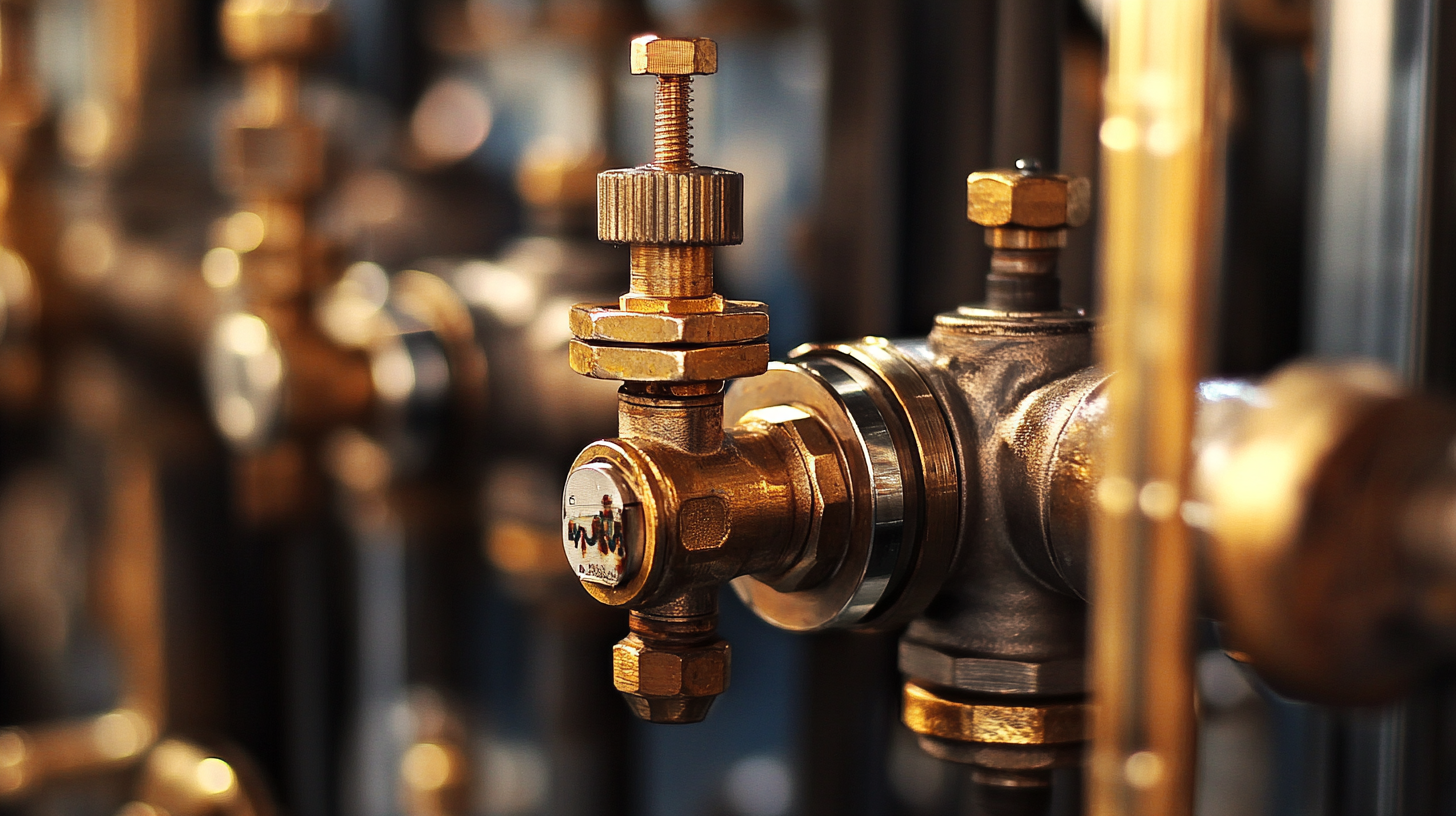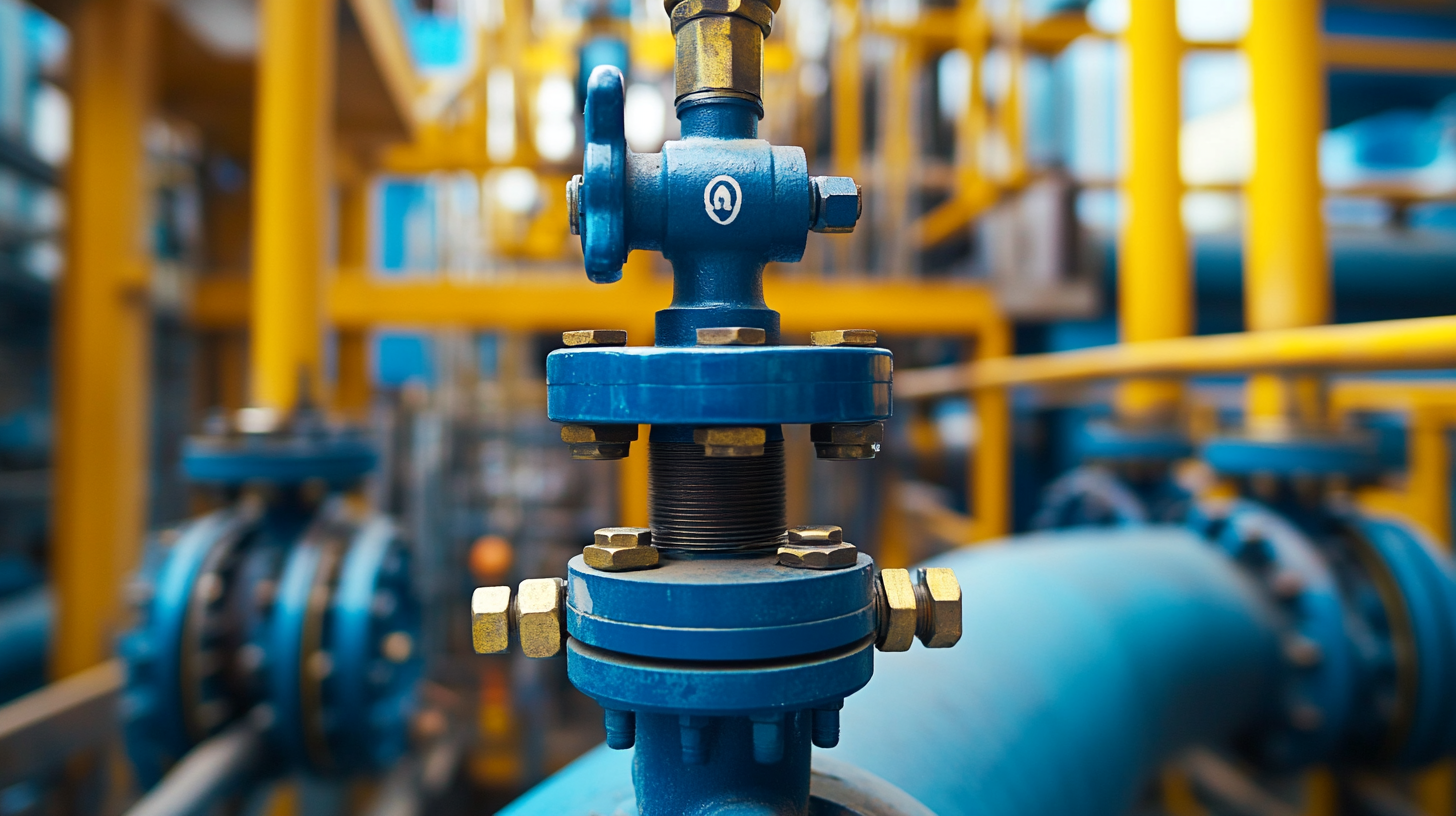7 Key Benefits of Using the Best Foot Valve for Optimal Performance
In the quest for optimal performance in fluid management systems, the selection of the right components is crucial, and one such component often overlooked is the foot valve. This essential device serves as the first line of defense in hydraulic systems, ensuring that water and other fluids do not flow back into the source and maintaining the prime of pumps. The significance of a high-quality foot valve cannot be overstated, especially considering the global market's expectations for durability and reliability. With the tagline "World-class manufacturing, Chinese pride, exported globally," we delve into seven key benefits of using the best foot valve. From enhancing efficiency to prolonging the lifespan of your pumping systems, understanding these advantages will empower users to make informed decisions that align with their operational needs, ultimately leading to superior performance in various applications.

Understanding Foot Valves: Essential Components for Fluid Control
Foot valves are essential components in fluid control systems, primarily used to maintain the prime in pumps and prevent backflow. Located at the bottom of a suction line, they trust their design to allow fluid to enter while keeping external elements from entering the pumping system. The effectiveness of a foot valve significantly impacts the overall efficiency of fluid delivery systems, making it crucial to select the best available option.
When choosing a foot valve, consider materials that resist corrosion and wear, especially if you're handling aggressive fluids. Stainless steel and durable plastics are often recommended due to their longevity and reliability. Additionally, ensuring the right size and opening mechanism will optimize the flow rate and minimize energy loss.
Tip: Regular maintenance is key to extending the lifespan of your foot valve. Periodically check for debris accumulation and ensure moving parts are operating smoothly to prevent any operational issues. Another tip is to install a strainer upstream of the foot valve to catch particulates that could hinder performance. By taking these proactive measures, you can enhance the functionality of your fluid control system significantly.

Maximizing Efficiency: How Foot Valves Enhance Pump Performance
Foot valves are essential components that play a crucial role in enhancing pump performance and maximizing efficiency. By acting as a one-way valve at the inlet of a pump, foot valves prevent backflow and ensure that the pump remains primed. According to a report by the Hydraulic Institute, proper valve selection can improve pumping efficiency by 5-10%. This efficiency gain not only increases the overall output of the system but also reduces energy consumption, leading to significant cost savings over time.
The installation of high-quality foot valves can also prolong the lifespan of the pumping equipment. A study from the American Society of Mechanical Engineers highlighted that systems equipped with reliable foot valves experience 15% less wear and tear compared to those without. By minimizing the risk of cavitation and maintaining consistent flow, these valves help in achieving stable operational performance, which is critical in industries such as agriculture, wastewater treatment, and industrial processing. This efficiency translates into higher productivity and reduced maintenance costs, underscoring the importance of selecting the best foot valve for optimal performance.
7 Key Benefits of Using the Best Foot Valve for Optimal Performance
| Benefit | Description | Impact on Performance |
|---|---|---|
| Prevents Backflow | Stops water from flowing back into the system when the pump is off. | Enhances efficiency by maintaining pressure in the system. |
| Improves Pump Priming | Helps in quick priming of the pump, reducing the time taken to start. | Maximizes throughput and minimizes downtime. |
| Reduces Wear on Pumps | Less backflow means less wear and tear on pump components. | Increases the lifespan of the pumping system. |
| Maintains Consistent Flow | Ensures steady flow of liquid to the pump without interruptions. | Improves overall system reliability and performance. |
| Minimizes Flooding Risk | Prevents flooding due to unexpected backflow. | Protects equipment and reduces maintenance costs. |
| Enhances System Efficiency | Maximizes the efficiency of the pumping system. | Leads to lower energy costs and improved output. |
| Versatile Applications | Suitable for various types of pumps across multiple industries. | Adaptability improves overall operational flexibility. |
Common Applications of Foot Valves in Various Industries
Foot valves play a critical role across various industries, particularly in water management and pumping systems. These valves are essential in maintaining the prime of pumps by preventing backflow. In agriculture, for instance, foot valves are commonly used in irrigation systems. According to a report by the U.S. Department of Agriculture, effective irrigation can increase crop yields by up to 30%. This highlights the importance of reliable foot valves in ensuring consistent water supply and optimal soil moisture levels, crucial for agricultural productivity.
In the industrial sector, foot valves are often employed in manufacturing processes that involve fluid transport. The Chemical Engineering Progress report indicates that industries utilizing foot valves can achieve a significant reduction in downtime—about 20%—due to the elimination of back siphoning that can lead to pump failure. Additionally, food processing industries depend on foot valves to comply with hygiene standards while ensuring the smooth flow of liquids. In fact, the Food and Drug Administration emphasizes the significance of using high-quality foot valves to prevent contamination in food production, which is vital for consumer safety and brand reputation.
7 Key Benefits of Using the Best Foot Valve for Optimal Performance
This chart illustrates the key benefits of using foot valves for optimal performance across various industries. Each benefit is rated on a scale of 1 to 10, highlighting their significance in operational efficiency and system reliability.
Troubleshooting Foot Valve Issues for Long-Term Reliability
When dealing with foot valve issues, understanding the common problems and their solutions is essential for long-term reliability in water management systems. Data from the American Water Works Association indicates that nearly 30% of pump failures are linked to foot valve malfunctions. These issues can arise from debris clogging the intake, which severely restricts flow, or from wear and tear over time affecting the sealing capabilities of the valve. Regular maintenance inspections can mitigate these risks, ensuring the foot valve operates efficiently and maintains optimal performance.

Furthermore, addressing foot valve problems promptly is crucial not just for immediate system efficiency but also for the financial health of operations. According to a report by the Global Pump Industry, the cost of unplanned downtime can amount to $1 million annually for industrial facilities. Implementing a proactive maintenance strategy—complete with regular checks and timely repairs—can significantly enhance the reliability of foot valves and, ultimately, the entire pumping system. By investing in quality foot valves and adhering to a meticulous maintenance schedule, operators can safeguard against costly disruptions and ensure a steady flow in their water systems.
Selecting the Right Foot Valve: Key Features to Consider
When selecting the right foot valve, it’s crucial to consider several key features that directly impact performance. First, the material of the valve is essential; materials like stainless steel offer greater durability and resistance to corrosion, which is vital for maintaining performance over time. Additionally, the valve size must match the system’s specifications to ensure optimal flow rates and reduce wear on pumps.
Tip: Always check the manufacturer’s guidelines for compatibility with your existing system to avoid costly mistakes.
Another important feature is the valve's application specificity. Foot valves are designed for various applications, and using the appropriate type can enhance efficiency. For example, heavy-duty foot valves are suitable for construction or water well applications, while lighter options may suffice for residential use. Additionally, assess the valve's installation requirements; some designs allow for easy retrofitting, saving time and labor costs.
Tip: Regular maintenance checks can help extend the lifespan of your foot valves and ensure they continue to operate at peak performance.
